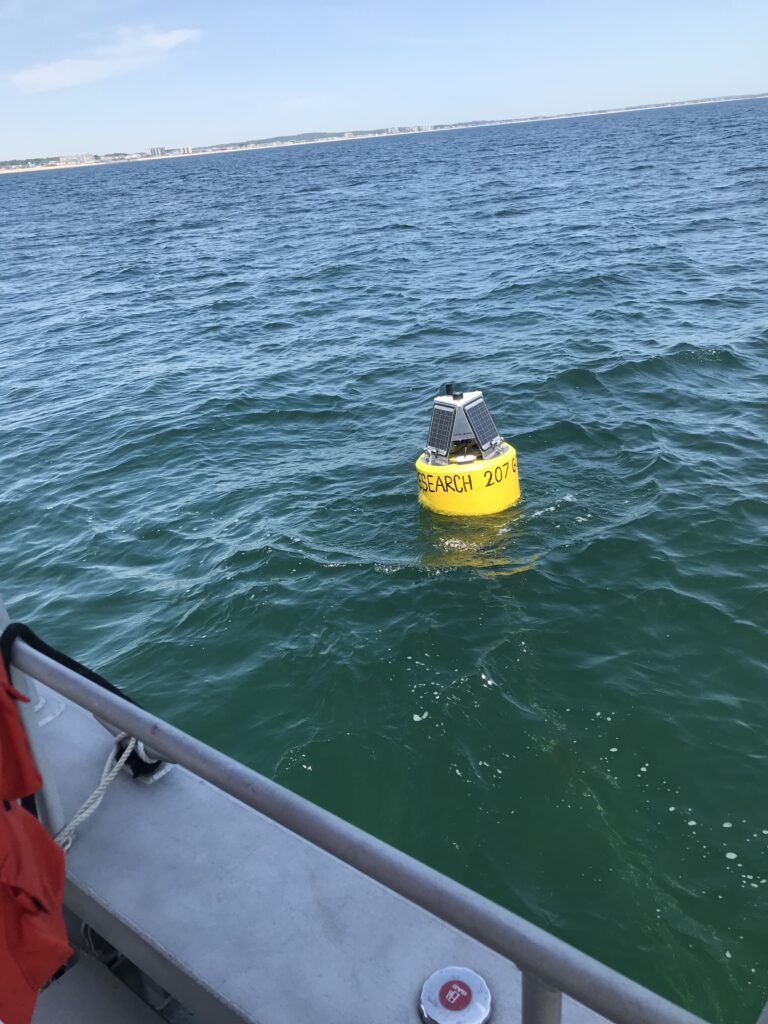Otolith Chemistry
Otoliths are calcium carbonate structures found in the heads of bony fish and are used for both hearing and balance. Otoliths have long been used for aging across species, as they grow proportionately with the individual, forming ring-like structures (like trees) that can be counted under a microscope. As they grow, they uptake trace elements through physiological and environmental processes and can serve as natural tags, providing an individual’s complete life history.
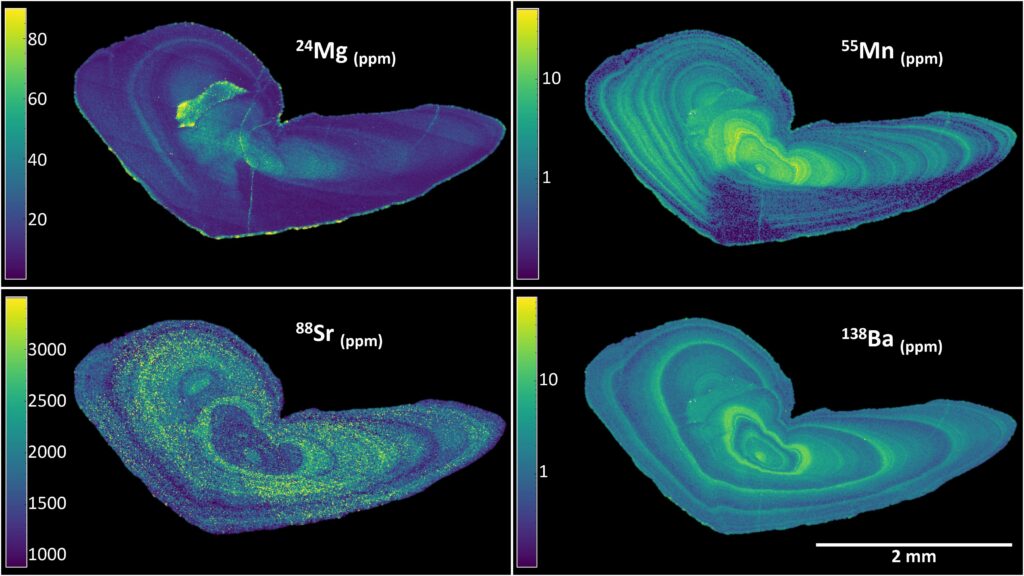
Vertebrae Chemistry
Sharks do not have otoliths- or bones, for that matter. Instead, the skeletal structure of sharks is composed of cartilage. Trace elements from the surrounding seawater and diet are taken up by the shark and deposited into the mineralized vertebral cartilage, acting as a chronological chemical record of movement and environmental history. We use these chemical patterns to study shark age, growth, and regional population connectivity.
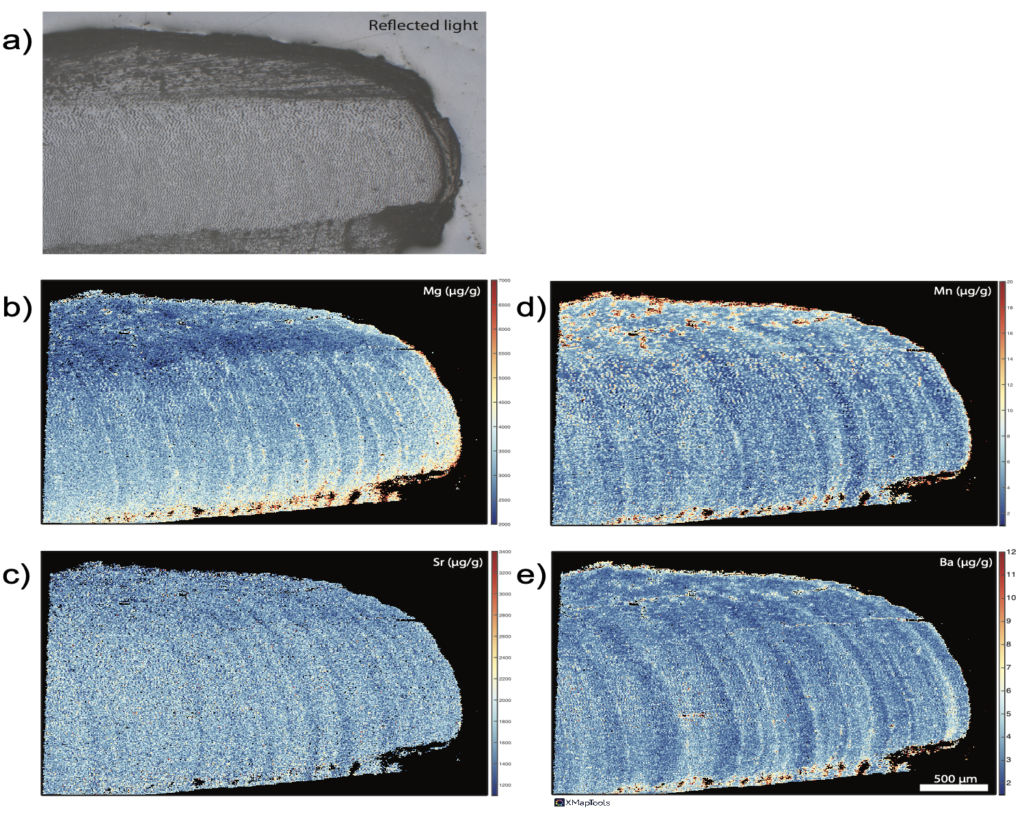
Age & Growth
We study the hard structures of fish (otoliths, scales) and sharks (vertebrae, spines) to determine age. Like rings on a tree, these calcified structures form bands of varying mineralization that we can count to determine the age of a fish. This information is then used to determine growth rates, age at sexual maturity, and longevity estimates.

Telemetry
Conventional (t-bar) and electronic (acoustic) transmitters are invaluable in studying the movement patterns of fishes. Specifically, we use these tags to study striped bass (Morone saxatilis) and Atlantic sturgeon (Acipenser oxyrhynchus oxyrhynchus) in the dynamic Saco Bay River and Estuary. We also use acceleration data loggers (ADLs) and pop-up satellite archival transmitting (PSAT) tags to explore post release mortality in shore-based recreational fishing.
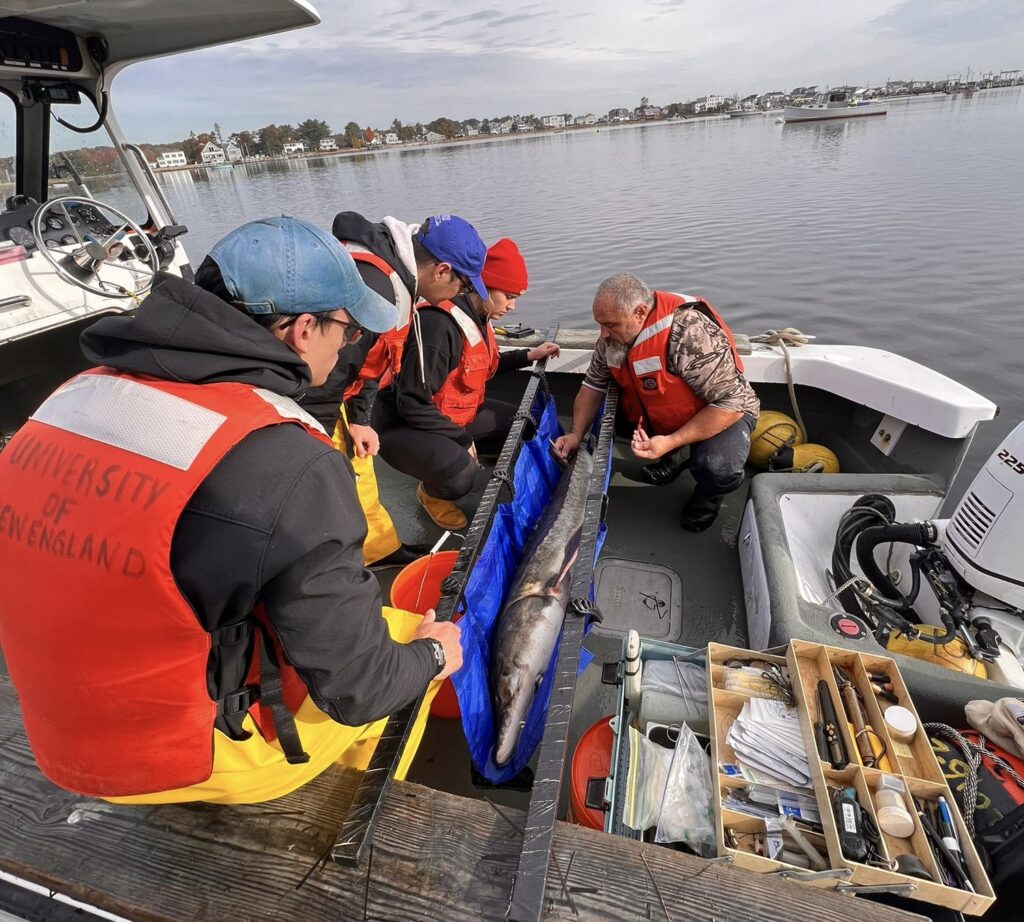
Stable Isotope Ecology
Stable isotope analysis of hard (vertebrae) and soft (blood, muscle, eye lens) tissues may be used to trace ecological histories and determine natal origins of highly migratory fish. In the Mohan Lab, we explore stable isotope variation in a variety of fishes from blacktip sharks to groundfish and Atlantic bluefin tuna.
Bycatch Reduction
Bycatch reduction devices (BRDs) are tools applied to fishing gear and techniques to reduce catch of non-target species in commercial and recreational fishing operations. We currently study the effectiveness of a BRD that uses electricity to deter sharks from interacting with fishing gear through field and lab based testing. This is a collaborative effort, and results will be directly utilized in commercial fisheries to decrease bycatch.
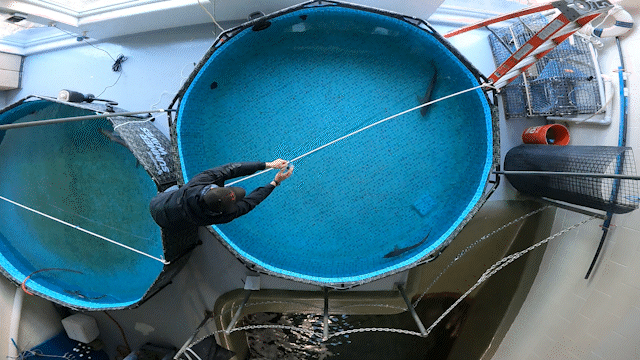
Collaborative White Shark Monitoring
In collaboration with the Maine Department of Marine Resources, Massachusetts Division of Marine Fisheries, the Atlantic White Shark Conservancy and with funding from the Maine Outdoor Heritage Fund, we collaboratively monitor the movement of white sharks in the Gulf of Maine. In the summer of 2022, we deployed this buoy in Saco Bay that sends out notifications in real time if a tagged shark is detected in nearby waters. The goal of this work is to increase public awareness and safety, as well as contribute to the growing network of shark monitoring in Maine.
